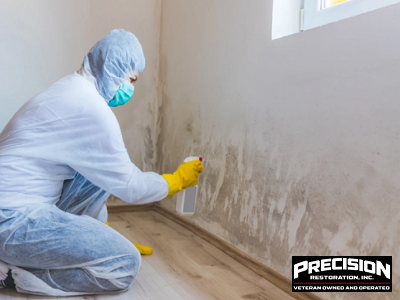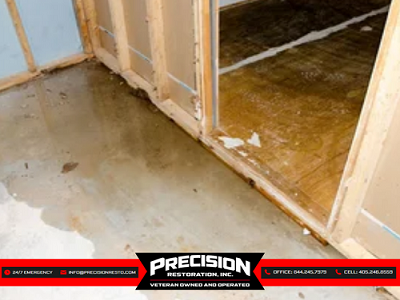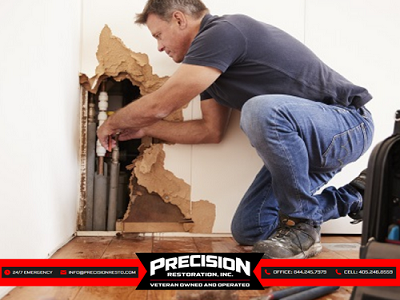Mold can be a homeowner’s worst nightmare, posing both health risks and structural damage to your property. When you discover mold in your home, it’s essential to act quickly and effectively to address the issue. Mold remediation involves a series of steps designed to remove the mold and prevent its return. Here are five key steps for successful mold remediation:
Assessment and Inspection:

The first step in mold remediation is to assess the extent of the mold problem and identify the underlying cause. Conduct a thorough inspection of your home to locate all areas affected by mold growth. Look for visible signs of mold, such as discoloration, musty odors, and water stains, as well as areas of high humidity or water damage. Determine the source of moisture feeding the mold growth, such as leaks, condensation, or poor ventilation.
Visual Inspection:
Begin by visually inspecting all areas of your home, paying close attention to areas prone to moisture accumulation, such as bathrooms, kitchens, basements, and attics. Look for visible signs of mold growth, including discoloration on walls, ceilings, and floors, as well as musty odors that may indicate hidden mold.
Moisture Detection:
Mold thrives in damp environments, so it’s essential to identify sources of moisture that may be fueling mold growth. Use moisture detection tools such as moisture meters and infrared cameras to pinpoint areas of elevated moisture levels, which could indicate leaks, condensation, or poor ventilation.
Air Quality Testing:
In some cases, mold may be present in areas not easily visible to the naked eye, such as inside walls or HVAC systems. Air quality testing can help detect hidden mold spores in the air, providing valuable insights into the overall indoor air quality and the extent of mold contamination.
Identification of Mold Species:
Not all molds are created equal; some species are more hazardous to health than others. Identifying the specific species of mold present in your home can help determine the appropriate remediation methods and any potential health risks associated with exposure to that particular mold species.
Evaluation of Structural Damage:
Mold can cause significant damage to building materials and structural components if left unchecked. During the assessment, inspect for any signs of structural damage caused by mold, such as rotting wood, crumbling drywall, or warped flooring. Assessing the structural integrity of the affected areas will help determine the extent of repairs needed during the remediation process.
Assessment of Health Risks:
Certain types of mold, such as black mold (Stachybotrys chartarum), can produce toxins known as mycotoxins, which pose health risks to occupants of the property. Assessing the potential health risks associated with the mold species present is essential for determining the appropriate safety precautions and remediation procedures, particularly for individuals with allergies, asthma, or compromised immune systems.
Containment
Once the affected areas have been identified, it’s essential to contain the mold to prevent its spread to other parts of your home. Seal off the affected area with plastic sheeting and tape to create a containment barrier. Use negative air pressure and ventilation fans to direct air flow out of the containment area and minimize the spread of mold spores. This containment step is crucial for protecting the rest of your home from further contamination during the remediation process.
Mold Removal
With the affected area properly contained, the next step is to remove the mold from surfaces and materials. Depending on the extent of the mold growth, removal methods may vary from surface cleaning to complete removal and replacement of contaminated materials. Use appropriate personal protective equipment, such as gloves, goggles, and respirators, when handling moldy materials to protect yourself from exposure.

Drying and Dehumidification:
After the mold has been removed, it’s crucial to dry out the affected area completely to prevent future mold growth. Use fans, dehumidifiers, and heaters to accelerate the drying process and reduce moisture levels in the air. Monitor humidity levels regularly and continue drying until moisture levels are within a safe range. Address any underlying moisture problems, such as leaks or poor ventilation, to prevent mold from returning.
Prevention:
The final step in mold remediation is to implement preventive measures to reduce the risk of future mold growth. Address any underlying moisture issues, such as leaks or condensation, to eliminate the source of moisture feeding the mold. Improve ventilation in moisture-prone areas, such as bathrooms, kitchens, and basements, to reduce humidity levels and promote air circulation. Regularly inspect your home for signs of water damage or mold growth and address any issues promptly to prevent mold from returning.
cONCLUSION
By following these five steps for mold remediation in Oklahoma City, Oklahoma – assessment and inspection, containment, mold removal, drying and dehumidification, and prevention – you can effectively address mold problems in your home and create a healthier indoor environment for you and your family.
If you need assistance with mold remediation or have questions about the process, don’t hesitate to Contact us today at Precision Restoration, Inc. Our experienced team is here to help you every step of the way.



